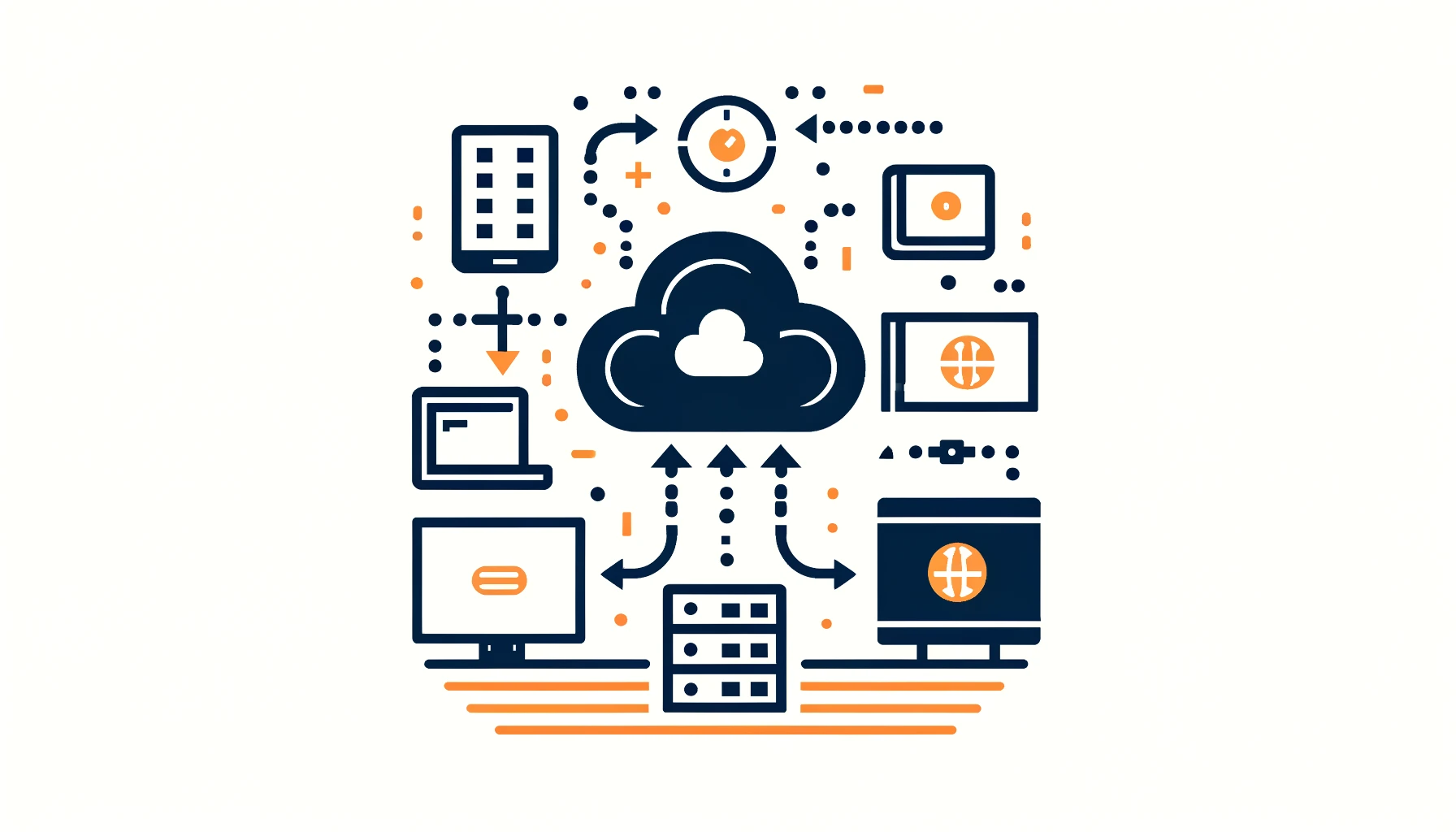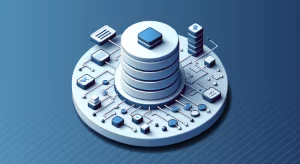
Accessing Cloud Data

In the era of digital transformation, cloud computing has become a crucial aspect of modern business operations. Understanding how to access cloud data securely is crucial. This article covers key concepts, workflows, and software solutions to help navigate and benefit from cloud services effectively.
Understanding Cloud Data Access
Before diving into the specifics of accessing cloud data, it is important to grasp the fundamental concepts. Cloud data refers to the information stored on remote servers, accessible via the internet.
Cloud service providers like Amazon Web Services (AWS), Microsoft Azure, and Google Cloud Platform (GCP) manage these servers. To access cloud data, you need to connect your local environment to the cloud infrastructure. This connection lets you easily retrieve, change, and save data.”
Key Components of Cloud Data Access
- Cloud Storage: Cloud storage is an essential component of accessing cloud data. It provides a scalable and reliable solution for storing and retrieving data. Popular cloud storage services include Amazon S3, Azure Blob Storage, and Google Cloud Storage.
- Cloud service providers provide APIs and SDKs to help access cloud data programmatically. These tools allow developers to interact with cloud services, perform operations, and integrate cloud functionality into their applications.
- Authentication and Authorization: Securing access to cloud data is crucial. Cloud service providers employ robust authentication and authorization mechanisms to ensure that only authorized users can access the data. This typically involves using access keys, tokens, or credentials to authenticate requests and grant appropriate permissions.
Accessing Cloud Data with Software Solutions
To streamline the process of accessing cloud data, various software solutions are available. These tools provide user-friendly interfaces and abstraction layers, making it easier for individuals and teams to interact with cloud services. Let’s explore a few popular options:
- Cloud Storage Browsers: Cloud storage browsers, such as CloudBerry Explorer and Cyberduck, offer a graphical interface for accessing and managing cloud data. These tools allow you to browse, upload, download, and organize files and folders across multiple cloud storage providers.
- Command-Line Interface (CLI) Tools: Cloud service providers offer CLI tools that enable access to cloud data through the command line. For example, the AWS CLI allows you to interact with AWS services, including S3, using simple commands. Similarly, the Azure CLI and Google Cloud SDK provide command-line access to their respective cloud platforms.
- Data Integration Platforms: Data integration platforms, such as Talend and Informatica, offer robust solutions for accessing and integrating cloud data with on-premises systems. These platforms provide connectors, transformations, and workflows to seamlessly move data between different environments.
Security Subsystems in Cloud Solutions
When accessing cloud data, security is of utmost importance. Cloud service providers offer various security subsystems to protect your data and ensure authorized access. Let’s explore the basics of security subsystems in the mentioned cloud solutions:
- AWS IAM manages access to AWS services securely by creating and managing users, roles, and policies.
- Azure AD is a Microsoft service for managing user identities, enabling multi-factor authentication, and regulating access to cloud resources.
- Google Cloud IAM allows you to control access to Google Cloud resources by setting permissions for users and groups.
Examples and Use Cases
To illustrate the process of accessing cloud data, let’s consider a few examples and use cases:
Uploading Files to Amazon S3
Prerequisites: AWS account, AWS CLI installed
Example command:
aws s3 cp local-file.txt s3://your-bucket/path/
Result: The local file “local-file.txt” is uploaded to the specified S3 bucket and path.
Querying Data in Google BigQuery
Prerequisites: GCP account, BigQuery dataset and table created
Example SQL query:
SELECT * FROM `your-project.your-dataset.your-table` LIMIT 10;
Result: The query retrieves the first 10 rows from the specified BigQuery table.
Accessing Azure Blob Storage with Python
Prerequisites: Azure account, Azure Storage account created, Azure Python SDK installed
Example Python code:
from azure.storage.blob import BlobServiceClient
blob_service_client = BlobServiceClient.from_connection_string("your-connection-string")
container_client = blob_service_client.get_container_client("your-container")
blob_client = container_client.get_blob_client("your-blob")
blob_data = blob_client.download_blob().readall()Result: The code retrieves the data from the specified Azure Blob Storage blob.
Cloud Infrastructure
The VPC, Google Cloud, and Azure all have important roles in securely accessing cloud data. The VPC is a Virtual Private Cloud in cloud infrastructure.
Google Cloud and Azure also have similar entities. These entities are crucial for securely accessing cloud data. Let’s explore these concepts and their relevance to data access:
Amazon Virtual Private Cloud (Amazon VPC)
Amazon VPC is a virtual network dedicated to your AWS account. It allows you to launch AWS resources, such as EC2 instances and RDS databases, into a virtual network that you define. VPC provides a secure and isolated environment for your cloud resources, enabling you to control access to your data. Relation to Data Access:
- VPC allows you to control network access for resources like Amazon S3 and Amazon RDS. This is done by setting rules for ACLs and security groups. These rules help manage traffic going in and out of your resources.
- You can configure VPC endpoints to securely access AWS services without exposing your data to the public internet.
- VPC enables you to establish private connections to your cloud data resources, enhancing security and reducing latency.
Google Cloud Virtual Private Cloud (VPC)
Google Cloud VPC is a virtual network that provides a secure and isolated environment for your Google Cloud resources. It allows you to define subnets, configure firewall rules, and control access to your cloud data. Relation to Data Access:
- Google Cloud VPC lets you create rules to manage traffic flow for your resources. These resources include Google Cloud Storage and Google Cloud SQL. The rules help control incoming and outgoing traffic.
- VPC Service Controls help you establish boundaries for your Google Cloud resources. These boundaries restrict access to your data based on identity and context.
- Private Google Access lets your VPC resources connect securely to Google Cloud services such as data storage. This connection bypasses the need to go through the public internet.
Azure Virtual Network (VNet)
Azure Virtual Network is a virtual network that provides a secure and isolated environment for your Azure resources. It allows you to define subnets, configure network security groups, and control access to your cloud data. Relation to Data Access:
- Azure VNet allows you to create network security groups (NSGs) to manage traffic flow. This applies to services like Azure Blob Storage and Azure SQL Database. These NSGs help control the flow of traffic to and from your resources. This includes popular data storage services such as Azure Blob Storage and Azure SQL Database.
- VNet service endpoints enable you to securely connect to Azure services. This includes Azure Storage and Azure SQL Database. You can access these services from your virtual network.
- Azure Private Link lets you create private connections to Azure services. This ensures that your data traffic stays within the secure Microsoft Azure network.
These VPC and analogous entities play a crucial role in securing access to your cloud data. By leveraging the security features and controls provided by these virtual networks, you can:
- Isolate your cloud resources and data from the public internet.
- Control inbound and outbound traffic to your data storage services.
- Implement network-level access controls and policies.
- Establish private and secure connections to access your cloud data.
It’s important to properly configure and manage your VPC or virtual network settings to ensure the security and integrity of your cloud data. This includes defining appropriate subnets, configuring firewall rules, and leveraging the available security features and services offered by your cloud provider.
Conclusion
Understanding cloud data access is essential in today’s digital world. Knowing key concepts and software solutions helps optimize data storage and processing for developers, analysts, and business users.
When it comes to ensuring the security and compliance of your cloud data, DataSunrise offers exceptional and flexible tools. DataSunrise provides various security features to safeguard your data. These include implementing strong security measures, setting audit rules, applying data masking, and ensuring compliance with industry regulations.
Visit our team at DataSunrise for an online demo. See how our solutions can protect your cloud data.
